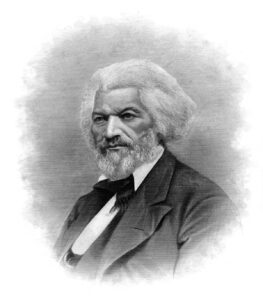Yuval Levin’s American Covenant and the goal of the Constitution

In the first chapter of Yuval Levin’s new book, American Covenant, he describes the U.S. Constitution as “a terse patchwork of compromises.” Not a promising start, for the United States or for this reader, who has devoted a good amount of time to thinking about and debating the meaning of that patchwork.
But American Covenant makes a compelling argument that the compromises reflected in this document provided the structure for America’s success in channeling diversity and difference into negotiation and accommodation—from the founding to today, compromise begets compromise. Levin explains how a renewed understanding of and appreciation for those original, critical compromises can help us navigate our apparent disunity today.
Throughout the book, Levin endeavors to make his audience comfortable with ongoing and unresolved differences. He repeatedly quotes or paraphrases James Madison’s insistence that our divisions are not only legitimate, but unavoidable. “As long as the reason of man continues fallible, and he is at liberty to exercise it, different opinions will be formed,” Madison predicted. Taking ongoing fallibility as a given, disagreement serves as evidence that we remain free to think for ourselves. Consequently, Levin explains, the Constitution’s institutions, its boundaries, and even its ambiguities don’t just occupy common ground in American life; together they help us forge it. In doing so, the Constitution seeks to enable social peace, which Levin defines as “the condition of differing without rejecting one another’s legitimacy—of disputing without being at war.”
Riding the wave of democracy
There is a theme in the book that brought to mind—stick with me—earthquake resilience. I was among the many in my generation who lost a full day of work in July 2015 reading—eyes wide and mouth agape—and then chatting everyone we knew about Kathryn Schulz’s magnum opus in The New Yorker on the Cascadia subduction zone, the movement of which will turn the most populous parts of Oregon and Washington states, as well as Northern California, into “toast.” I’ve spent the past nine years on guard when visiting the Pacific Northwest but, more importantly, musing about how the man-made structures in which we live and work can provide the best chance of survival.
I’m not a seismologist (and was thus unable to contribute a jaw-dropping quote to Schulz’s doom scroll of a masterpiece), but it seems like a big part of the answer is accepting and embracing the movement of the land: flexible building materials and foundations, dampers that help absorb and cancel out vibrations, and bearings that allow the foundation to move with the earth while keeping the superstructure more stable.
This concept of flux and tension, the push and pull of living together peacefully while maintaining our disagreements, coaxed me toward the fundamental perspective that I needed to accept to appreciate the wisdom of the Constitution: There’s no end-goal other than peaceful coexistence. This country isn’t working its way slowly to a utopia in which we all see things the same way (my way) and share the same opinions about morality, the proper role of government, free trade, and whether rolling stops are the safest and most efficient driving choice. For me at least, recognizing that the goal isn’t to make everyone see that my principles are correct provides the intellectual freedom to engage in the process of hashing out an accommodation I can live with (or at least live to fight another day) and that my neighbor can also live with. The freedom to meet and accept that we’ll likely both walk away in continued disagreement allows for the bargaining and negotiation necessary for the ongoing—and never-ending—project of self-governance. As Levin says, “in the political life of a free society, unity does not mean thinking alike; unity means acting together.” (“Or not acting,” my Reason superego whispers every time he says this, but you get the idea.)
Not only that, but—and I’m reluctant to confess I hadn’t quite thought about it this way before—voters might legitimately swing back and forth between broad visions of more or less powerful government based on their sense of the country’s needs at the moment. So, in addition to accepting that I don’t need to persuade people to adopt my principles in order to participate successfully in civic life, I must also accept that, like a building on rollers, what is required of government may shift with the times based on no objective standard of right and wrong at all. Ever seeking to find the perfect non-legal analogy, I draw your attention to the evolution of the peppered moths during England’s industrial revolution. Dark peppered moths were rare in the early 19th century because birds could spot them more easily on the lighter bark of the tree trunks. By the end of that century, however, darker moths far outnumbered their light-colored brethren, who were easier to spot on the now-soot-covered trees. Clearly, there is no inherent principle or lack thereof in being a light- or a dark-colored moth: The advantage lies solely in its usefulness for the circumstances of the times.
I will likely always prefer less government than my fellow Americans, but that’s an easier pill to swallow when I remember that the American system can “respond to its own failures by shifting its weight without losing its balance,” as Levin puts it. Like my New York high-rise office building swaying disconcertingly with the wind, “[t]his peculiar character of our system . . . seeks an active balance—peace but not quiet—as a core goal of political life.” The hoped-for aspiration Levin identifies, quoting Joseph Cropsey, is a “temperate equilibrium of error.” If that is the standard to which we’re holding ourselves, no one need hesitate to roll up her sleeves and take part.
Congress: A near-perfect venue for negotiation and accommodation
The focus on constant change and ongoing negotiation and accommodation provides Levin with numerous opportunities to point out the ways in which the legislative branch, Congress, is the only federal body that affords a venue for aggregating all of the diverse viewpoints and for hammering out a workable consensus on specific questions, without reaching unanimity on underlying worldviews or preferences.
Looking at the other branches drives that point home. The president, being just one person, cannot be representative of a country with such a diversity of viewpoints. Only a multi-member body can even approach such an aim. The president’s office is an administrative one, a locus of action, but it is not an accommodative one. If the negotiating of priorities and the balancing of trade-offs is not done by Congress, it will not occur in the executive branch. Unfortunately, administrative agencies nevertheless adopt what are essentially legislative measures and, as Levin observes, often measures that were too partisan to make it through Congress. Not only does that result in regulatory swings when the White House changes hands (or, at least, changes parties), benefiting those individuals and entities with the resources to navigate shifting regulatory schemes, but it also heightens the perceived importance of presidential elections and the accompanying angst over the outcomes.
Congress, on the other hand, is slow. While its democratic legitimacy lies in acting through majorities, U.S. elections don’t give anyone mandates; they give representatives a seat at the ever-shifting composition of the negotiating table. Because elections occur every two years for the different bodies, majorities must be lasting, rather than passionate, in order to result in legislative change. Here, again, another Levin insight: Vesting the legislative power in Congress, with all of its procedural hurdles and fluctuating coalitions, allows us to avoid becoming too divided by preventing us from ever becoming too unified in the first place. Indeed, in the United States, it is said that there are no true defeats because there are no true victories. There are only tenuous status quos. Except . . .
The judiciary: Or how I learned to stop worrying and love Congress
Levin makes what should be an obvious point: Much of what is wrong with our constitutional practice today is not illegal. Accordingly, he concludes, leaving American constitutional interpretation to judges alone is an abdication of civic responsibility. “To think of the courts as the only real practitioners of constitutionalism is to let everyone else off the hook,” he writes, “and to encourage a kind of civic dereliction that badly undermines constitutionalism and (therefore) now also badly undermines our society’s cohesion.”
I can vouch for the civic dereliction, and among those who should least countenance it. On several occasions as a Hill staffer, I raised constitutional concerns about bills that were hand-waved away—by self-proclaimed constitutional conservatives (not my boss), no less—who explained to me that if there were any parts of the law that were actually unconstitutional, the courts would simply take that part out. Let me get a towel for those hands, Pontius.
Courts have a critical part to play in our system, but outside of the overarching expectation that the judiciary will strike down the efforts of democratic majorities to trample on the rights of minorities, it is not the branch we should turn to for the negotiation and accommodation required to maintain social peace. Rather, courts ultimately tell one side that they don’t have to compromise; they win. That’s a nice feeling for the victor, but it nullifies any need to moderate, to make changes to win the acceptance of those who disagree. No longer are we living together in grudging but accommodative disagreement; a victory in court means one side effectively gets to tell the other to pound sand. When we’re trying to resolve public policy differences, then, as opposed to contract interpretation or tort responsibility, resolution by judge or jury does not set us up for social peace in the long term.
As a lawyer who seeks to bring sometimes-controversial cases to the courts for resolution, I read this and paused, wondering:

But Levin goes on: “Our great public disputes need to be resolved through the work of the legislature” (true, sigh) and the “most valuable service the courts provide to the cause of national unity is in their policing of the rules and boundaries of constitutionalism, and their restricting of the power of majorities to break those rules and boundaries.” And they do so “by insisting on the adherence of officials and citizens to the structure and procedures of the Constitution.” The separation of powers attorney relaxes. Whew, not the baddies.
Nevertheless, I agree that the courts, tasked with picking a winner and a loser, are not the branch most well-designed to steer us eternally differing humans toward common ground. Levin writes:
When we fully identify constitutionalism with legalism, we mistake what are properly political differences for legal disputes and imagine that the rules of the game alone can determine the outcome. But properly political disagreements happen within the rules. They are legitimate, even when they are divisive[.]
Judges, lawyers, and litigants add value in exploring and reinforcing the constitutional boundaries, and Levin says that “the federal judiciary can preserve the bargains that Congress and the Constitution have settled; it can route political conflict back to Congress or the states,” and it “can facilitate the operation of majority rule and the protection of majority rights.”
Unfortunately, when the legislature fails to function as a body where our disagreements are accommodated (not necessarily resolved) through negotiated outcomes, the president and the increasingly powerful executive branch step into that void, with the judiciary left only to play catch up as the unpopular referee reminding the majority:

Per Levin, we should not look to the courts “to offer shortcuts to our preferred policy outcomes when we don’t have the patience for politics.” Luckily, that terse patchwork of compromises we grudgingly agreed to long ago provides a better option.
On federalism and markets
One of my favorite lines in American Covenant describes the Founders as effectively stumbling upon what I think of as perhaps the greatest strength in the American system: a limited federal government with states retaining all of the powers not delegated to the national government. Debating a strong central government (the lack thereof, after all, being a primary reason for the Philadelphia gathering) against the concern that a country as diverse as even those original states already were could not be centrally governed, Levin writes that “the middle ground discovered by the convention ended up opening some unexpected vistas for unity in American life by balancing these concerns.” (Emphasis mine.)
I don’t know what was behind Levin’s choice of the word “discovered,” but it called to mind Friedrich Hayek’s description of the competitive market as a discovery process through which complex outcomes beneficial to many are surfaced despite being neither designed nor intended by any one participant. Sprinkled throughout Levin’s book is the suggestion that the convention’s negotiation process—which resulted in a constitution not previously contemplated by any delegate arriving at the hall—produced a structure that allowed us to repeat that process in perpetuity, forming majorities and coalitions through bargaining and accommodation, while protecting minorities from being run roughshod over. Competitive markets don’t just aggregate information and ideas; they generate information and ideas that did not previously exist. So too the constitutional convention in 1787 and a well-functioning legislature today.
Hayekian nod satisfied, American Covenant is, for me, at its best in explaining complex political theory simply but with nuance. Levin describes how the constitutional system allows state governments to be more majoritarian, enacting very different policies, depending on the preferences of their voters, while the national government with its limited spheres of control could focus more on protecting minority rights and maintaining social peace. In our time, when the contents of a California town’s library or the curriculum of a Mississippi city’s sex ed class are instantaneously presented for national commentary, it can seem like there are exponentially increasing issues that need to be resolved. But federalism, or “minding your own business,” as vice presidential nominee Tim Walz says (and, I hope, means), can allow us to live near each other, if not harmoniously, at least peacefully. Making more room for diversity and disagreement, as majority rule in states allows, thereby permits Americans to be more unified at the national level, where far fewer decisions that affect our everyday lives should be made.
Levin posits that there is a role for government in supporting Americans seeking to live in accordance with their conception of the good life, but also that there will always be differences in what that good life is and what sorts of support should be lent. Thus, “[l]etting people in one part of the country live out one sort of answer to these questions while others elsewhere live out another is a tremendous source of flexibility and strength for American society.” Flexibility and strength—federalism returns us to the earthquake resilience analogy. We have seen what happens without that flexibility—civil war. And while there are some questions, like the one at stake then, that must rightly be resolved at the national level, the fewer such rigidities do indeed result in a stronger whole.
It is thus lamentable that we have nationalized so much that can and should be addressed by the states. Levin points to education, health care, welfare, and housing as areas where Congress has rendered states mere administrators of federal policy, including a welcome critique of cooperative federalism. Inevitably, that system nationalizes our politics, leading us to argue about domestic policy issues as unitary, partisan questions in which only one answer can win out while simultaneously rendering every individual’s civic participation less meaningful, the decision-makers less representative, and the space for unity amidst diversity ever smaller.
How do we right the ship?
Like most people, I’m better at identifying problems than providing solutions. (A law firm partner once told me—fairly—not to spot any more issues in our case unless I had also ascertained a fix.) My oft-proposed answer, civics education, sounds inadequate and certainly not timely. Levin suggests a few changes that each branch could make, and I agree with most of them. Acknowledging that government institutions are easier to change than culture, Levin counsels that
our politics requires a kind of person it does not produce by itself, and so it must depend on other institutions of our society to produce that person. It has to make room for, and to offer essential protections to, a set of preliberal and prerepublican institutions of formation—familial, communal, religious, civic, and educational.
I think that’s right. As Alexis de Tocqueville observed nearly two centuries ago, “Americans of all ages, all stations of life and all types of disposition are forever forming associations.” He reported that “[t]here are not only commercial and industrial associations in which all take part, but others of a thousand types-religious, moral, serious, futile, very general and very limited, immensely large and very minute.” Crucially for our purposes, he wrote that if Americans “want to proclaim a truth or propagate some feeling . . . they form an association. In every case, at the head of any new undertaking, where in France you would find the government . . . in the United States you are sure to find an association.”
Levin stresses that “the formation of citizens is a matter of establishing habits and that civic habits are built up by civic action.” Our government is second to none in protecting the institutions that Levin says are needed to produce the kind of citizens our system requires. The type of American citizen de Tocqueville found everywhere in the 1830s. I’m more concerned, however, that, despite protecting those institutions, the government isn’t making room for them.
Civic action now, more likely than not, consists of a call for the government to do something. With assertions like “government is the name of the things we choose to do together” and taxpayer money (plus apparently unlimited national debt) available to fund those things—not to mention the option to legally compel others to participate—that’s understandable. But in foisting our social responsibilities onto government, we lose the associational civic habits that form the citizens a self-governing nation requires. Where government takes over sheltering the homeless, feeding the hungry, funding the arts, and educating the next generation (making the president the grant-giver-in-chief) there is little room left for the work of organizing, debating, and resolving conflict within Edmund Burke’s little platoons that make up our daily lives.
One of the themes running through the book is that voluntary restraint can improve both the office and the officeholder. For the executive branch, Levin writes, “there is strength in assertions of responsible restraint that contemporary presidents have failed to grasp.” And “constraints upon the power of judges are meant to empower them within their proper sphere and also to empower republican citizens within their broader sphere.” Congress, of course, must get back in the habit of wielding its power rather than delegating the policy calls to the president. But that would be easier if those policy decisions were limited to those enumerated to it: foreign affairs and trade, defense, and regulation of commerce between the states. While of great importance, those areas don’t typically have an immediate and substantial impact on most Americans’ everyday lives providing more space, accordingly, for the negotiation and accommodation that body forces. By minding the Constitution’s constraints on the powers it can exercise, Congress could reclaim its character as the most representative and legitimate branch, reflecting the diversity of American opinion while acting (or not) together.
The potency of restraint (along with civics education—there, I said it) can strengthen us as well. Just because we can solve something, as a majority in an election or a victorious litigant in court, doesn’t mean we should. A policy favored by 51% of Americans could be pushed through at the federal level without accommodating minorities who want something else (or nothing at all). But it will lack the legitimacy (and the ideas-generating) quality of a decision reached by a growing and durable majority built by accommodating others who won a seat at the negotiating table.
I’m aware of my tendency to see more federalism as the answer to almost everything that troubles our politics today, and I acknowledge that that’s oversimplistic. But here, the strength of restraint meets the flexibility of federalism. “When decisions are made closer to the level of the community and the individual, more Americans can feel included in the work of self-government,” Levin writes. “In this sense, perhaps the highest purpose of federalism is forging legitimacy by making greater civic participation and representation possible.” Three cheers for Levin and for our American Covenant.






